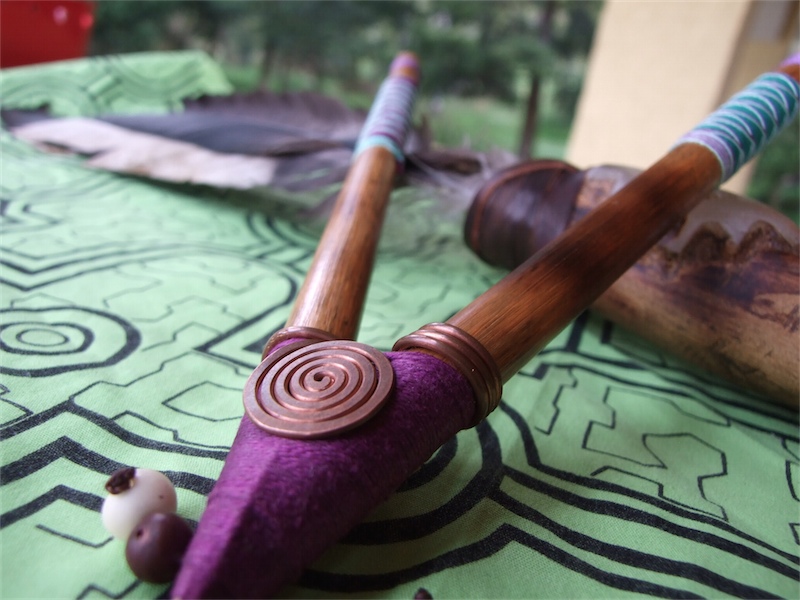What is Shamanism?
Shamanism is humanity’s original spiritual practice. Before there were religions, or priestesses and priests, there were tribal shamans. Shamans undertake a trance journey into mythic realms to directly experience revelations from the Divine, in the form of compassionate helping spirits.
 Some anthropologists date shamanism back to humanity’s Stone Age. Other anthropologists believe shamanism arose before the end of human evolution. There is archaeological evidence of shamanism beginning around 40,000 years ago. Certainly the cave paintings and petroglyphs of the Stone Age speak of the same mysteries of ecstasy, empowerment and healing shamans experience today.
Some anthropologists date shamanism back to humanity’s Stone Age. Other anthropologists believe shamanism arose before the end of human evolution. There is archaeological evidence of shamanism beginning around 40,000 years ago. Certainly the cave paintings and petroglyphs of the Stone Age speak of the same mysteries of ecstasy, empowerment and healing shamans experience today.
We also know that shamanism is extremely ancient because it is found in tribal societies on all the continents. This hints that shamanism developed as a cultural practice before the global diaspora of the human family. Shamanism has been documented in cultures throughout Native America, particularly in the Amazon River basin, in Asia, especially in Korea, throughout Siberia, in the Arctic among the Inuit, or Eskimos, among the Australian Aborigines and other Pacific peoples, in many parts of Africa, in ancient Scandinavia and the Baltic nations, and even today among the last remaining tribal culture in Europe, the Saami or Laplanders.
Shamanism has survived every cultural shift from the Neolithic through the Industrial Revolution and into the post-Modern era for one reason: shamanism works. The healing methods used by shamans are amazingly, miraculously, mysteriously effective. Shamanic healing methods are also astoundingly similar throughout all of these widely separated regions.
The unique aspect of shamanism, found among all of these diverse people, is the shamanic journey. Shamans experience a journey out of their bodies and into the mystic realms of spirit. In these magical realms, wise animals, deities and ancestors in spirit form empower the shaman, and assist the shaman to help and heal other people as well. Most people enter these realms only through myths or dreams. But shamans enter the realms of spirit at will, going into shamanic trance by listening to rapid drumming, rattling or song.
Shamans experience a layered cosmology, in which our everyday world, our realm, is in the middle, with worlds below us, and worlds above us. These other realities transcend the limitations of space and time. The lower worlds are generally the realm of spirit animals and plants, embodied oversouls of entire species, compassionate allies and helpers. The worlds above us are the realm of wise spirit teachers, ancestors and deities. Both worlds, upper and lower, are places shamans go for lessons in healing, wholeness and power.
Only in our world, the physical realm, is there suffering. In both the upper world and the lower world, the spirits are compassionate and loving towards people. The upper and lower world spirits are motivated to heal those who suffer here in the middle.
In addition to the upper worlds and the lower worlds, there is a hidden dimension of this middle realm, where the hidden folk such as Elves, Faeries, Dwarves and other spiritual beings known from folklore live. And this hidden dimension of our middle world is also home to the individual spirits of rocks, plants, trees, rivers and other natural features of our world. Shamans believe that all beings are alive with consciousness, and all beings have spirit. Shamans will often speak to the spirits of trees, or fire, or rocks and hills, to consult them and learn wisdom from them.

